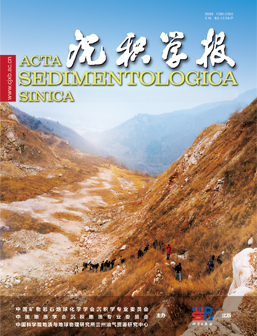Characteristics and evolution of deep-water gravity flow channel-lobe system in deep-water slope——A case study of the three-member of Ordovician Lashizhong Formation outcrop in Wuhai, Inner Mongolia
doi: 10.14027/j.issn.1000-0550.2025.009
- Received Date: 2024-11-11
- Available Online: 2025-05-12
-
Key words:
- Key words :gravity flow /
- turbidity flow /
- channel /
- sand/mud content /
- depositional model /
- Lashizhong Formation /
- Ordovician /
- Ordos Basin
Abstract: Abstract:[Objecive]A set of typical gravity flow sedimentation were developed in the Ordovician Lashizhong Formation of the western margin of Ordos Basin.To investigate the formation process of gravity flows in the three member of the Lashizhong Formation, summarize the sedimentary characteristics and evolutionary pattern, and establish a sedimentary model based on these findings.[Methods] The analysis was conducted through methods such as outcrop observation, rock thin section examination, and paleocurrent measurement. [Results]The results show that there are eight kinds of lithofacies and six lithofacies associations are developed in the study area, namely horizontal bedding shale(A1), lens-shaped massive bedding calcirudyte(B1), lens-shaped parallel bedding sandstone(B2), lens-shaped cross bedding sandstone-siltstone(B3), wedge cross bedding sandstone-siltstone(C1), bedded graded bedding sandstone-siltstone(D1), Bedded parallel bedding siltstone (D2)and Bedded pebbly sandstone(D3), indicating channel axis deposition(B1), vertical aggradation channels(B2,C1,A1), distributary channels(B3,C1,A1), proximal lobes(D1,A1), distal lobes(D2,A1)and mass transport deposits(D3); The lower part of the three-member successively develop the channel axis deposition, vertical aggradation channels, distributary channels, proximal lobes and distal lobes, and is divided into 5 stages; The middle and upper parts of the three-member develop the mass transport deposits, proximal lobes and distal lobes, and is divided into 7 stages. [Conclusion]The evolution of which is closely related to the type and energy of gravity flow. At the initial stage, gravity flow is dominated by debris flow, with the weakening of the debris flow energy, the turbidity current dominates, the vertical aggradation channels are developed through multi-stage periods of erosion and sedimentation. With the further weakening of the turbidity flow, the distributary channel and lobes are developed. Tectonic movement can increase the sand content of sediment supply, leading to the initial development of massive transport deposition first and then large-scale lobes with higher sand content were developed. The vertical evolution of gravity flow sedimentation is predominantly governed by a combination of factors, including relative sea-level fluctuations, sediment supply and its compositional characteristics, as well as tectonic movements. An initial rise in sea level followed by a subsequent fall suggests a corresponding decrease and then increase in the scale of gravity flow development. Variations in sediment supply types give rise to diverse sedimentary units. These include channel axis deposition predominantly composed of calcirudyte, as well as vertical aggradation channels, distributary channels, proximal lobes, and distal lobes mainly consisting of fine sandstone and siltstone. Moreover, the magnitude of sediment supply significantly impacts the morphological features, dimensions, and sand-to-mud ratio of these sedimentary units. During the depositional period of the Lashizhong Formation in the western margin of the Ordos Basin, tectonic activity was relatively subdued. This tectonic quiescence facilitated the formation of a channel-lobe system that, in comparison to the scale typically encountered in exploration contexts, is relatively modest in size. The interplay of these factors—sea-level changes, sediment supply dynamics, and tectonic setting—collectively shapes the architectural complexity and distribution patterns of gravity flow deposits within the basin. Understanding these controls is crucial for accurate reservoir characterization and prediction in hydrocarbon exploration and production.This study can supple the understanding of gravity flow evolution in the study area and provide theoretical reference for oil and gas exploration.
| Citation: | Characteristics and evolution of deep-water gravity flow channel-lobe system in deep-water slope——A case study of the three-member of Ordovician Lashizhong Formation outcrop in Wuhai, Inner Mongolia[J]. Acta Sedimentologica Sinica. doi: 10.14027/j.issn.1000-0550.2025.009 |






 DownLoad:
DownLoad: